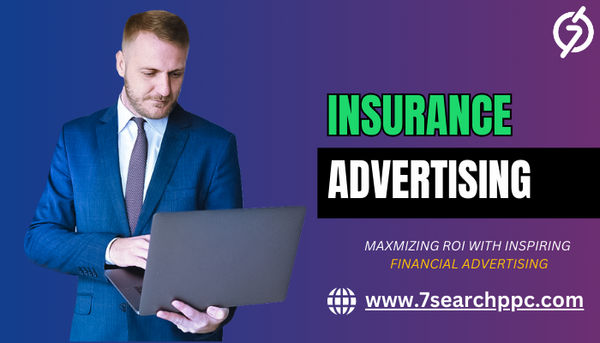Notifications
ALL BUSINESS
COMIDA
DIRECTORIES
ENTERTAINMENT
FINER THINGS
HEALTH
MARKETPLACE
MEMBER's ONLY
MONEY MATTER$
MOTIVATIONAL
NEWS & WEATHER
TECHNOLOGIA
TV NETWORKS
VIDEOS
VOTE USA 2026/2028
INVESTOR RELATIONS
COMING 2026 / 2027
ALL BUSINESS
COMIDA
DIRECTORIES
ENTERTAINMENT
FINER THINGS
HEALTH
MARKETPLACE
MEMBER's ONLY
MONEY MATTER$
MOTIVATIONAL
NEWS & WEATHER
TECHNOLOGIA
TV NETWORKS
VIDEOS
VOTE USA 2026/2028
INVESTOR RELATIONS
COMING 2026 / 2027
About Me
 Smith Jones
Smith Jones Financial Advertising Agency are designed to attract individuals and businesses seeking professional advice and strategies to manage their finances effectively.
 Smith Jones -
September 14, 2024 -
Business -
262 views -
0 Comments -
0 Likes -
0 Reviews
Smith Jones -
September 14, 2024 -
Business -
262 views -
0 Comments -
0 Likes -
0 Reviews

The insurance industry is highly competitive, with companies vying for consumer attention across various platforms. In this landscape, insurance advertising plays a pivotal role in generating brand awareness, building trust, and driving conversions. Crafting an effective insurance ad strategy requires a deep understanding of the target audience, advertising platforms, and industry trends.
This comprehensive guide delves into the key aspects of insurance advertising, from the basics to advanced techniques, and provides actionable insights on how to create impactful insurance ads that generate results. Let's explore how you can develop campaigns that not only capture attention but also convert leads into customers.
Insurance advertising refers to the strategic promotion of insurance products and services through various channels to attract potential customers and drive sales. The goal is to educate consumers about the value of insurance, highlight the unique benefits of specific policies, and ultimately influence their purchasing decisions.
In an industry where trust and financial security are paramount, effective advertising helps insurance companies:
Insurance advertising has evolved significantly over the years, driven by changes in technology, consumer behavior, and industry trends.
A successful insurance advertising campaign is a well-rounded effort that integrates several key elements, all designed to capture the attention of potential customers and encourage them to take action.
Understanding your audience is crucial to the success of your insurance advertising campaign. Different types of insurance policies appeal to different demographics, and your messaging should reflect that.
By understanding the needs, concerns, and behaviors of your target audience, you can create more effective and relevant campaigns.
Your advertising message should be clear, concise, and compelling, highlighting the unique value of your insurance offerings. Here are some essential elements to include in your messaging:
Selecting the right platforms for your insurance ads is key to reaching the right audience at the right time. Here are some of the most effective insurance ad platforms:
By diversifying your ad platforms, you can maximize reach and impact while tailoring your message to each platform’s audience.
Visual design plays a crucial role in capturing attention and making your insurance ads stand out. Here are some design tips to keep in mind:
There are several different types of insurance ads, each serving a unique purpose and reaching audiences in different ways. Knowing which type to use can enhance the effectiveness of your campaigns.
Display ads are visual ads that appear on websites, apps, or social media platforms. These ads typically include images, logos, and minimal text to quickly capture attention.
Search ads appear at the top of search engine results pages (SERPs) when users type in specific queries related to insurance, such as "affordable health insurance" or "best auto insurance rates."
Video ads are highly engaging and can be used to explain the benefits of different insurance policies in a concise and visually appealing way. Platforms like YouTube allow companies to run pre-roll ads or in-stream ads that appear before or during video content.
Native ads are designed to blend in with the content of the platform on which they appear, making them less intrusive. These can be articles, sponsored posts, or in-app ads that fit seamlessly into the user experience.
In the ever-evolving landscape of insurance advertising, staying ahead requires a blend of strategic thinking, creativity, and a deep understanding of your target audience. As consumers become more discerning and the marketplace grows more competitive, crafting effective insurance ads that cut through the noise is more important than ever.
Ans: Insurance advertising refers to the marketing strategies and tactics used by insurance companies to promote their products, such as life, health, auto, or home insurance. The goal is to reach potential customers, build brand awareness, and drive policy sales through various platforms like social media, TV, search engines, and more.
Ans: Insurance advertising is crucial because it educates consumers on the importance of insurance and helps them understand which products best suit their needs. It also builds trust, encourages customer loyalty, and differentiates insurance companies from their competitors, driving growth and sales.
Ans: Insurance ad campaigns should be updated regularly, especially when:
